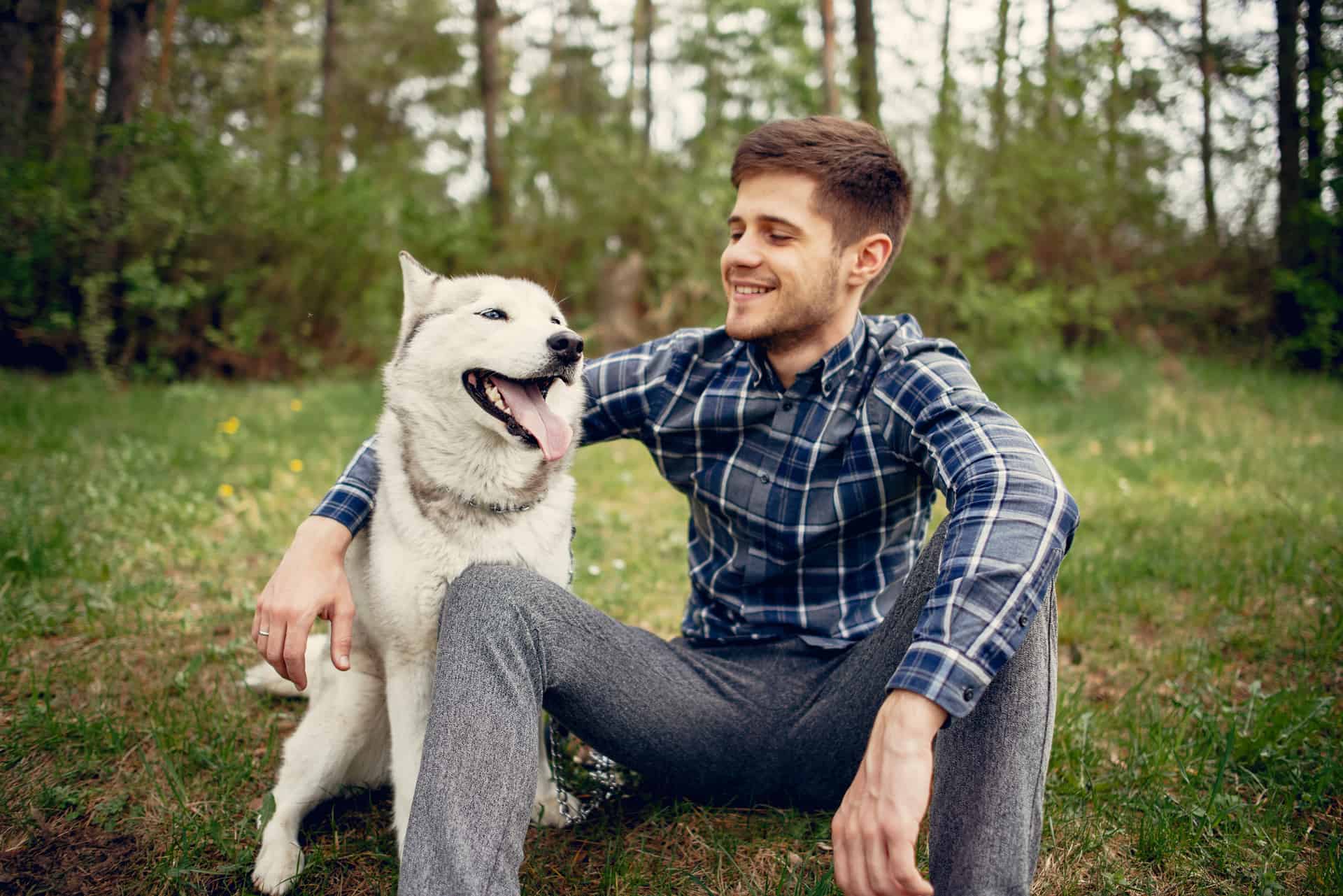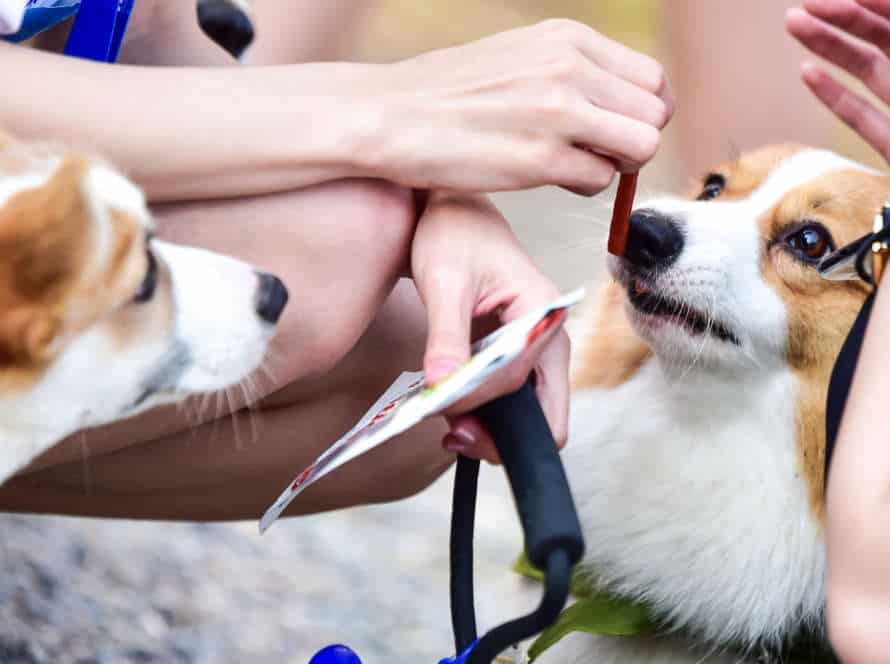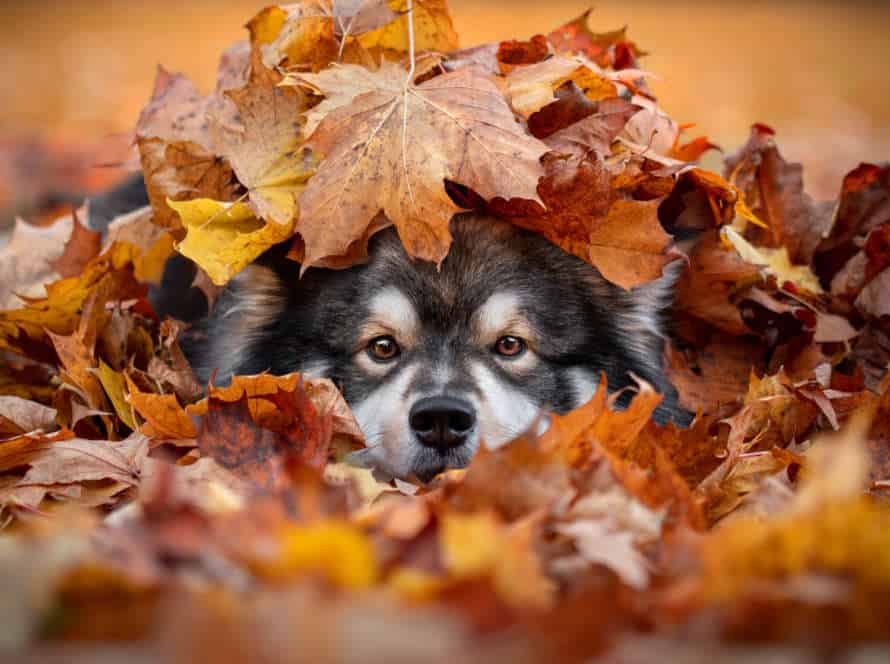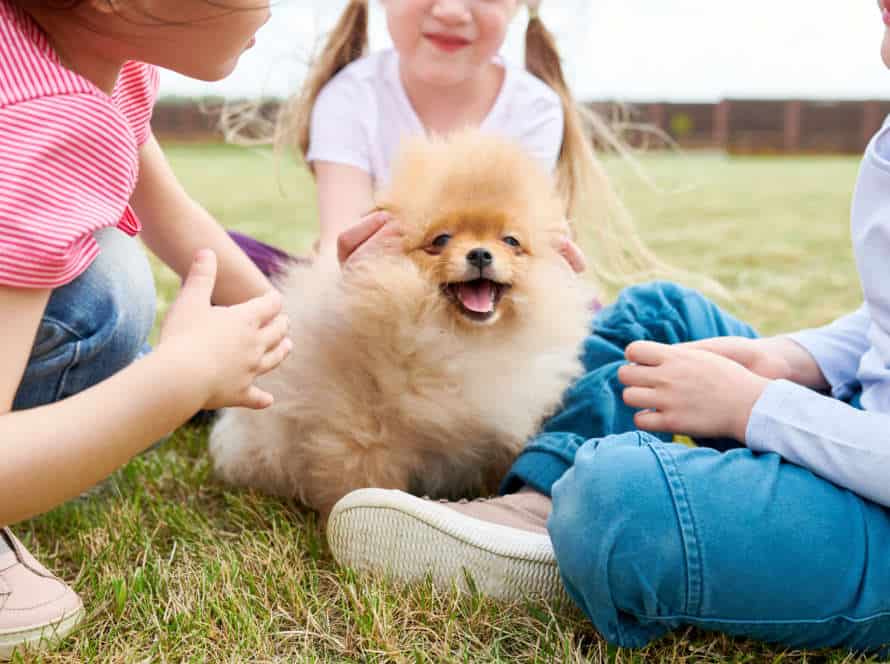Building Confidence in Adult Dogs: Step by Step
Confidence-building: an important part of training adult dogs. Follow these steps:
- Figure out what makes your dog nervous or anxious. For example: loud noises, people, objects.
- Introduce the dog to new sounds, smells and environments. Start easy and increase intensity over time. Reward them for staying calm.
- Obedience training creates trust.
- Give them socialization opportunities. Dog parks, obedience classes etc. They’ll become more comfortable around people and dogs.
- Be consistent. Confidence-building takes time and effort. Pro tip: Praise and reward progress, stay positive.
Understanding the Importance of Confidence Building
Confidence building is critical for dog owners. Especially with adult dogs, as these have already established habits that can be difficult to change. Comprehending the significance of boosting confidence helps your pup feel more secure and better their behavior and health. Let’s explore further!
Benefits of Confidence Building
Confidence is essential for success, not just for humans but for dogs too. When you boost confidence in adult dogs, it can help them feel less anxious and more secure. Here are the advantages of confidence-building for adult dogs:
- Increased resilience – Confident dogs can adapt to new situations and bounce back quickly after a setback.
- Better behavior – They’re less likely to display aggression or fear-based behavior like growling, biting, or cowering.
- More exercise – They’re more likely to have fun with outdoor activities, games, and training sessions with their owners. This leads to better physical and mental health.
- Better socialization – Confident dogs are more likely to interact well with people and other dogs, avoiding loneliness and isolation.
Pro tip: For building confidence in adult dogs, start with basic commands, introduce new experiences slowly, and give a lot of praise and positive reinforcement.
Signs of Low Confidence in Dogs
Humans aren’t the only ones lacking confidence – dogs can struggle with it, too. Signs of low doggy confidence are:
- Cowering or hiding when they’re around people.
- Easily getting scared or anxious around new environments or loud noises.
- Showing aggression towards others.
To help your adult pup gain confidence, try these 4 steps:
- Give them a positive experience by socializing and exposing them to new things.
- Train them using positive reinforcement methods.
- Make training sessions short and enjoyable – ramp up the difficulty as they get more confident.
- Exercise them and give them mental stimulation to increase their confidence and well-being.
With patience, consistency and rewards, you can help your pup become more confident and live a happier life.
Factors Affecting Confidence in Adult Dogs
Confidence is essential for a dog’s wellbeing and behavior. Here are the factors that affect a dog’s confidence level:
- Genetics: A pup’s genetics influence their temperament, such as their confidence level.
- Socialization: During 3-16 weeks, socialization has a great effect on their confidence as an adult. Negative experiences can lead to fear and anxiety.
- Training: Positive training can help build a dog’s confidence and teach them to deal with new situations.
- Health: Physical issues or pain can make a dog less confident and more fearful.
- Environment: Not enough social interaction, stimulation, or exercise can cause confidence problems. A safe and enriching environment can help.
By being aware of these factors, you can help build your adult dog’s confidence, such as socialization, positive training, and providing a healthy environment.
Techniques for Building Confidence in Adult Dogs
Gaining trust in grown-up canines requires tolerance, dedication, and repetition. It can be a very satisfying journey for both doggos and their guardians! In this article, we’ll go over the diverse methods to assist in developing your pup’s assurance. We’ll analyze different coaching techniques, how to set up a motivating and stress-free atmosphere, and how to recognize and honor decent behavior. Let us take a closer look!
Socialization
Socializing adult dogs is essential to boosting their confidence. This can be done by giving them positive experiences with people, other pooches and new surroundings. Here are some tips for helping adult dogs feel more secure:
- Use positive reinforcement training – give treats, toys or praise when they are around unfamiliar faces or in different settings.
- Increase exposure to new environments slowly – start in calmer spots then move on to livelier places like dog parks or busy areas.
- Promote doggy interaction – go on play dates with sociable pups or send your pooch to obedience classes.
- Build trust – as your pup gets comfier with new experiences, it’ll become easier to foster trust and encourage good behavior.
Remember, every dog is unique and may need varying levels of socialization. However, steady reinforcement and positive experiences can help any adult dog become more confident.
Exposure to New Environments and Situations
Exposure to fresh environments is essential for grown-up canines to build self-assurance. Here are some techniques, step-by-step, to aid your pup feel more relaxed and secure in odd scenarios.
- Start small. Begin with low-stress situations, like visiting a buddy’s home or a tranquil park. Then, work up to more complex atmospheres.
- Use positive reinforcement. Applaud and award your pup when they show composure and tranquillity in new experiences. This will reinforce their positive association with the situation.
- Keep calm and patient. Canines can sense their owners’ emotions, so staying peaceful and tolerant can help them feel less anxious.
- Expose your dog to new stimuli gradually. Introduce your pup to novel sounds, smells, and objects in a regulated and slow way to assist them to get used to new settings.
- Offer reassurance. If your dog appears scared or apprehensive, give comforting words and touch to help them loosen up.
With time and practice, these methods can help your pup feel more confident in new and strange circumstances.
Positive Reinforcement Training
Positive reinforcement training is an awesome way to give adult dogs confidence. Reward them with treats, toys and praise when they do something good. It’ll encourage them to do it again!
Steps:
- Begin with easy commands like “sit”, “stay” and “come” to get started.
- Use yummy treats or fun toys to give them a boost.
- Make the exercises harder over time.
- Be consistent and don’t punish.
- Do these exercises often to help them learn and build confidence.
Positive reinforcement training can help adult dogs gain the trust and knowledge they need to be successful.
Exercises to Help Build Confidence in Adult Dogs
Building confidence in adult dogs can be challenging. But, with lots of persistence and the correct exercises, you can create a balanced pup. Do exercises with your dog, like simulated distractions and counter conditioning. This will help create a secure and safe atmosphere for them to feel relaxed and confident. Let us look into the steps you can take to start boosting your pup’s self-assurance:
- Start with basic obedience training. This will help your dog learn new things and achieve small victories, which can build self-esteem.
- Regularly expose your dog to new situations and people. This can help them learn to adapt to change and build trust in you as their handler.
- Practice positive reinforcement techniques, such as giving treats and praise when your dog does something positive.
- Gradually increase the level of difficulty in training exercises, such as increasing the level of distraction or adding new commands, as your dog becomes more confident.
- Provide plenty of exercise and playtime to build physical and mental strength, which can contribute to overall confidence.
- Be patient and consistent in your training efforts. Confidence-building takes time and effort, but the rewards of having a confident, happy dog are worth it.
The Confidence Walk
The Confidence Walk is perfect for adult dogs who need some extra confidence, especially those that are anxious or fearful in new places. Here’s how it works:
- Take your pup on a leash to a new environment that won’t be too overwhelming.
- Let them explore at their own pace, but don’t give them any praise or encouragement.
- If they start to show signs of fear or anxiety, stay calm and direct their attention to something positive.
- When they show signs of confidence and relaxation, reward them with praise or a treat.
- Incrementally make the environment more challenging and the walk longer as your dog gets more confident.
Over time, your pup will learn to trust you and feel secure in unfamiliar surroundings.
Agility Training
Agility training is a great way to help your adult dog build confidence. It provides mental and physical stimulation, while improving coordination and balance. To give your pup a confidence boost, try these exercises:
- Tunnel Run: Make a tunnel with different items like cardboard boxes, PVC pipes or bendable wires, and watch your pup run through it. This helps them build bravery as they learn to tackle obstacles.
- Low Jumps and Hurdles: Set up low jumps and hurdles for your pup and let them get used to them. Increase the height gradually as your pup gains confidence. This helps boost their coordination and balance.
- Balance Beams: Balance beams are a great way to help your pup with balance and coordination. Set it up slightly above the ground and encourage them to walk across it. Start with a short distance and increase it gradually as they progress.
These exercises will help your pup build trust in their abilities over time. Be patient and supportive during the process.
Interactive Playtime
Interactive playtime is an awesome way to help boost adult dogs’ confidence. It not only strengthens your bond with your furry companion, but also gives them physical and mental stimulation. Here are some activities to help:
- Tug-of-war: Teach your pup to grip onto something and strengthen their jaw muscles. Make sure you create some rules like no biting or pulling clothing.
- Hide and seek: Hide their favorite toy or treat and motivate them to find it. This sharpens their sense of smell and teaches them problem-solving.
- Agility courses: An obstacle course is great to sharpen their physical skills and build coordination and confidence. Use chairs, cushions, and tunnels to create one.
Pro tip: Always watch interactive playtime and reward them for good behavior. Regular playtime can reduce anxiety, improve social skills, and make your pup healthier and happier.
Addressing Fear and Anxiety in Adult Dogs
Working with adult dogs can be challenging. Fear and anxiety may already be embedded in them. Building trust and confidence to help them out of these behaviours can be tricky. However, it’s still possible to make progress with patience and consistency. Here, we’ll discuss step-by-step strategies to tackle adult dog fear and anxiety.
Identifying Fear and Anxiety Triggers
Identifying fear and anxiety triggers is the first step to addressing them in adult dogs. Common triggers include:
- Loud noises, e.g. thunderstorms, fireworks, construction
- New environments, e.g. unfamiliar people, animals, places
- Separation – left alone for long periods of time
- Medical conditions – pain, discomfort, neurological issues
Once you have identified the triggers, use desensitization and counter-conditioning techniques. Expose your dog to the trigger in a controlled, positive way, and reward their calm behaviour. With patience, you can build their confidence and reduce their anxiety.
Desensitization and Counter Conditioning
Desensitization and counter conditioning are two tools to help adult dogs cope with fear and anxiety. Desensitization means gradually introducing your pup to a scary stimulus. Counter conditioning is changing their emotional response to that stimulus.
To use these techniques to build your dog’s self-esteem:
- Introduce the stimulus slowly, in a controlled way.
- Offer treats and praise when they stay calm.
- Increase exposure bit by bit, continuously rewarding good behavior.
- Practice regularly until the stimulus no longer scares them.
Consistent training and patience are needed to help your pup overcome their fears and become more confident!
When to Seek Professional Help from a Dog Trainer or Behaviorist.
As a pet owner, it’s essential to know when your dog needs professional help. Here are some signs to look out for:
- Aggressive behavior towards people or animals.
- Uncontrollable barking, biting, or digging.
- Destructive activities such as chewing furniture or belongings.
- Excessive fear, such as hiding or trembling during normal activities.
- Performing compulsive behaviors like licking or tail-chasing for a long time.
If your pup is exhibiting any of these signs, consulting a professional is the best way to address the issue. Trainers can help build confidence in your dog step-by-step.
Pro tip: Training your dog can significantly improve their quality of life.
Frequently Asked Questions
1. How can I build confidence in my adult dog?
A: Building confidence in an adult dog can be achieved through gradually exposing them to new experiences, using positive reinforcement training, and providing regular exercise and socialization opportunities.
2. What are some signs that my adult dog may have low confidence?
A: Signs of low confidence in adult dogs can include fearfulness, hiding or avoiding social situations, and exhibiting submissive postures such as cowering or tail tucking.
3. Is it possible to build confidence in an older dog?
A: Yes, it is possible to build confidence in older dogs through consistent and patient training and socialization. However, it may take longer to see results than with younger dogs.
4. Can I build confidence in my adult dog without the help of a professional trainer?
A: Yes, it is possible to build confidence in adult dogs without the help of a professional trainer. However, seeking guidance from a trainer or behaviorist can be helpful in developing a personalized training plan and addressing any underlying behavioral issues.
5. Can overexposure to new experiences lead to more fear and anxiety in my adult dog?
A: Yes, exposing your adult dog to too much new stimuli too quickly can be overwhelming and could potentially lead to increased fear and anxiety. It is important to gradually introduce new experiences in a controlled and positive manner.
6. How long does it typically take to build confidence in an adult dog?
A: The time it takes to build confidence in an adult dog can vary depending on the individual dog and the extent of their fear or anxiety. It may take weeks or even months of consistent training and socialization to see significant improvements.







